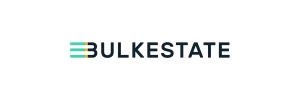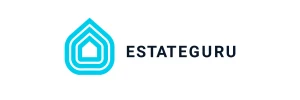Emergency Loans: Fast Cash When You Need It Most
Emergency Loans: Fast Cash When You Need It Most
Life throws curveballs. Medical bills, car repairs, unexpected job loss—when financial emergencies hit, you need solutions fast. This guide breaks down every legitimate option for getting emergency cash in 2025.
Last Updated: October 15, 2025
When Traditional Lenders Say No
Getting rejected by banks stings. You're already stressed about money, and then you're told you don't qualify. Here's the thing though—rejection from one lender doesn't mean you're out of options.
Second-chance lenders exist specifically for people who've been turned down elsewhere. Companies like MoneyMutual and 1F Cash Advance connect you with direct lenders who care more about your current income than your credit score from five years ago. They're not doing you a favor out of kindness—they charge higher rates because they're taking on more risk. But when you're in a bind, having options matters.
Credit unions are massively underrated. Seriously. While big banks are running your application through automated systems that spit out rejections, credit unions actually look at your situation. Navy Federal Credit Union has a reputation for working with members who've hit rough patches. The catch? You need to be a member first, which sometimes requires connections to military service, certain employers, or community organizations.
💡 Real Talk
Online lenders like Avant, Upstart, and Upgrade accept credit scores as low as 560-580. They use "alternative underwriting"—fancy term for looking at your employment history, education, and income trends instead of just your credit score. One downside: their interest rates range from 18% to 35% APR, which adds up fast on larger loans.
Payday Alternative Loans (PALs)
If you're part of a credit union, PALs are legally capped at 28% APR. That's still expensive—don't get me wrong—but it's way better than the 400% you'll pay at a payday loan shop. PALs usually range from $200 to $1,000 with repayment terms of 1-6 months.
The Payday Loan Reality Check
Can you get a payday loan with terrible credit? Yes. Should you? That's complicated.
Payday lenders don't run traditional credit checks. They want proof of income and a bank account. That's it. You can walk in (or apply online) and have cash within hours. The problem isn't getting approved—it's what comes after.
🚨 The Debt Trap Is Real
Here's the math that hurts: borrow $500 for two weeks at the "standard" rate of $15 per $100 borrowed. You'll owe $575 total. If you can't pay it back in two weeks (and 80% of borrowers can't), you roll it over. Now you're paying another $75 in fees. Do this a few times and you've paid hundreds in fees on a $500 loan.
In states with minimal regulation, APRs range from 235% to 652%. Think about that.
If you absolutely must use a payday loan, borrow the minimum amount you need and have a concrete plan to repay it on your next payday. Not "I hope I can" but "I definitely will because I've cut these specific expenses."
Better Alternatives to Payday Loans
- Cash advance apps like Earnin or Dave charge minimal fees ($0-$8) compared to payday loans
- Ask your employer for a paycheck advance—many companies offer this quietly
- Credit union PALs with their 28% APR cap
- Borrow from family/friends if possible (put it in writing to keep relationships intact)
- Local assistance programs through churches, nonprofits, or community organizations
Small Emergency Loans: $200-$500
When you need a couple hundred bucks fast, you've got more options than you might think.
Cash Advance Apps (The Smart Choice)
💸 Klover
Amount: Up to $200
Speed: Instant
Cost: $2-5 for instant delivery
The deal: No credit check. Standard delivery is free but takes 1-3 days. Best for covering small gaps until payday.
💳 Brigit
Amount: Up to $250
Speed: 20 minutes
Cost: $8.99-14.99/month subscription
The deal: Includes budgeting tools and overdraft predictions. Worth it if you use the financial planning features.
🚀 Dave
Amount: Up to $500
Speed: Same day
Cost: $1/month + optional $3-25 express fee
The deal: Highest advance amount. Good if you need more than $200-250 and want to avoid payday loans.
Traditional Small Loans
Direct lenders like Advance America will loan you $200 with same-day approval. The cost? Typically $15 per $100 borrowed, so you'd pay back $230. That's expensive but not as crushing as larger loans with the same percentage.
In the UK, Fast Loan UK and similar direct lenders can approve and transfer £200 the same day via bank transfer. Regulations there cap the total cost at 100% of the loan amount.
Non-Loan Options for Quick $200
Sometimes the fastest money is money you already have—you just need to convert it to cash:
- Sell stuff: Old phones at ecoATM kiosks = instant cash. Facebook Marketplace for furniture and clothes can net $200 in 1-2 days
- Gig economy: DoorDash drivers report $15-25/hour. Work 10-15 hours = $200
- TaskRabbit: Furniture assembly, moving help, handyman tasks pay $20-40/hour
- Plasma donation: Not glamorous, but first-time donors can earn $50-100 per visit
Medium Emergency Loans: $1,000-$2,000
Once you're looking at four figures, you need to be more strategic. These amounts can either solve a crisis or create a new one if you're not careful.
Online Personal Loans
Online lenders are fast. Like, really fast. Rocket Loans, LendingClub, and Upstart can approve $1,000-2,000 loans and deposit money within 1-2 business days. Some even do same-day funding if you apply early.
The fine print:
- Interest rates: 18%-36% APR for poor credit
- Minimum credit scores: 560-600 (varies by lender)
- Origination fees: 1%-8% of loan amount
- Terms: Usually 2-5 years for personal loans
Do the math before you sign. A $2,000 loan at 25% APR for 3 years means paying back roughly $2,800 total. That's $800 in interest. Is it worth it? Only you can answer that based on your emergency.
🎯 Smart Strategy
Don't put all your eggs in one basket. Instead of taking a $2,000 loan at 30% APR, consider:
- $1,000 personal loan at best available rate
- $500 from selling items you don't need
- $500 from extra gig work over 2-3 weeks
Result: Less debt, lower interest, and you've kickstarted a side income that might help prevent future emergencies.
Credit Union Emergency Loans
If you're already a credit union member, check their emergency loan programs. Many offer $500-2,500 loans specifically for unexpected expenses with more flexible terms than commercial lenders. Processing takes 2-5 days typically, so plan accordingly.
Government & Community Assistance
Before taking on debt, check if you qualify for emergency assistance. Seriously—this is free money or interest-free loans designed for situations exactly like yours.
Federal & State Programs
- TANF (Temporary Assistance for Needy Families): Cash assistance that varies by state. Some states offer one-time emergency payments without long-term enrollment
- SNAP (Food Stamps): Frees up cash by covering food expenses. Emergency SNAP can be approved in 7 days
- LIHEAP: Helps with heating/cooling costs, freeing up money for other emergencies
- Unemployment insurance: If you lost your job, file immediately. Some states offer emergency advances while processing
How to access: Call 211 in the US to connect with local social services. They'll walk you through what's available in your area.
Community Resources
Local organizations often provide emergency financial help that doesn't require repayment:
- Catholic Charities, Salvation Army, St. Vincent de Paul: Emergency assistance up to $300 for utilities, rent, essentials
- Food banks: Beyond food, many connect people with utility payment assistance
- Religious organizations: Even if you're not a member, many offer community crisis loans at 0% interest
- Modest Needs: Nonprofit that provides grants for specific emergencies to prevent homelessness
Military-Specific Resources
Military members and families have additional options:
- Army Emergency Relief: Quick Assist Program provides up to $2,000
- Navy-Marine Corps Relief Society: Interest-free loans and grants
- Air Force Aid Society: Emergency loans with very low interest
What You Should Never Do
⛔ Avoid These Mistakes
- Don't max out high-interest credit cards: 25-30% APR adds up faster than you think
- Don't take out multiple payday loans: This is how debt spirals completely out of control
- Don't borrow from unlicensed lenders: "Guaranteed approval no questions asked" = scam or predatory
- Don't lie on loan applications: Fraud charges aren't worth it
- Don't ignore the problem: Medical bills, utility companies—most will work with you on payment plans if you communicate
- Don't fall for "guaranteed approval" scams: Legitimate lenders must assess ability to repay
- Don't borrow without reading terms: Know the APR, fees, and what happens if you're late
Realistic Income Options
If you need $1,000+ and want to avoid debt entirely, earning it is the healthiest long-term solution. Yes, it takes effort. No, it won't happen overnight. But it also won't cost you 200% APR.
Gig Economy (Fast Money)
These can generate real money within days:
- Food delivery (DoorDash, Uber Eats, Instacart): $15-25/hour. Work 40 hours in a week = $600-1,000
- Rideshare (Uber, Lyft): $20-30/hour in busy markets
- TaskRabbit: Handyman tasks, furniture assembly, moving help = $25-50/hour
- Rover/Wag: Dog walking and pet sitting = $15-30 per visit
Online Freelancing (Higher Pay)
If you have marketable skills, freelancing pays better than gig work:
- Writing/Editing: $25-100/hour depending on niche
- Graphic Design: $30-75/hour
- Web Development: $50-150/hour
- Virtual Assistant: $15-35/hour
- Social Media Management: $25-75/hour
Platforms: Upwork, Fiverr, Freelancer.com. Build your profile with a couple lower-paying jobs first to get reviews, then raise your rates.
Selling Assets
One person's clutter is another person's treasure:
- Electronics: Old phones, tablets, gaming consoles—ecoATM for instant cash or eBay for better prices
- Designer items: Poshmark, ThredUp, Mercari for clothing and accessories
- Furniture: Facebook Marketplace, Craigslist, OfferUp
- Collectibles: Trading cards, vintage toys, comics can be surprisingly valuable
Building an Emergency Fund
Look, I know—when you're in crisis mode, thinking about future emergencies feels impossible. But once you're through this one, start building a cushion even if it's just $25/month. Here's why:
$400
According to Federal Reserve data, 37% of Americans couldn't cover a $400 emergency expense with cash or savings. Having even $500 saved puts you ahead of millions of people and breaks the cycle of emergency borrowing.
Micro-savings strategies that actually work:
- Round-up apps (Acorns, Chime) automatically save spare change
- $5 challenge: Save every $5 bill you get. It's surprisingly effective
- 26-week challenge: Start with $1, add $1 each week. By week 26 you've saved $351
- Automate it: $25/week = $1,300/year. You won't miss $25 if it disappears before you see it
Frequently Asked Questions
What's the easiest loan to get approved for?
Payday loans are technically easiest because they don't check credit—just income and bank account. But "easiest" doesn't mean "best" due to 400% APR rates. For reasonable options, secured loans (using collateral) have higher approval rates. Among unsecured loans, online lenders like Avant (minimum 580 credit score) and Upstart (560 minimum) have high approval rates for bad credit borrowers.
Can I get a loan with a 500 credit score?
Yes, but your options are limited and expensive. Upstart accepts scores from 560, Avant from 580. Some lenders like OneMain Financial consider credit scores in the 600s. You'll pay 25%-36% APR typically. Credit union PALs (payday alternative loans) don't have strict credit requirements and are capped at 28% APR. Secured loans using collateral are also possible with low scores.
What's the difference between payday loans and installment loans?
Payday loans require full repayment (plus $15 per $100 borrowed) within 2-4 weeks when you get paid. APR is typically 300-400%. Installment loans spread repayment over 2-24 months with fixed monthly payments and lower APRs (18%-36% for bad credit). Installment loans are way more manageable and less likely to trap you in debt cycles.
How fast can I get emergency money?
Cash advance apps: Minutes to hours. Payday loans: Same day. Online personal loans: 1-2 business days. Credit unions: 2-5 days. Government assistance: 7-30 days depending on program. If you need money within hours, cash advance apps (Brigit, Dave, MoneyLion) are your best bet—much cheaper than payday loans.
Will applying for emergency loans hurt my credit?
Depends. Soft credit checks (used by many online lenders for pre-qualification) don't affect your score. Hard credit checks (when you formally apply) drop your score 5-10 points temporarily. Multiple applications within 14-45 days typically count as one inquiry for credit scoring purposes. Payday lenders usually don't check credit at all, but they may report late payments.
Are there legitimate guaranteed approval loans?
No. Legitimate lenders must verify ability to repay—it's the law. Any lender advertising "guaranteed approval no matter what" is either a scam or charging illegal rates. What does exist: very high approval rates (90%+) from second-chance lenders for borrowers who meet basic criteria (income, bank account, ID). But there's no such thing as truly guaranteed approval from reputable lenders.
What if I can't repay my emergency loan on time?
Contact your lender immediately—before you're late. Many offer extensions or payment plans, though fees may apply. For payday loans, rolling over creates a dangerous cycle. Better option: contact a nonprofit credit counselor who can negotiate with lenders. Never take out another loan to pay the first one—that's how debt spirals happen. Some lenders offer hardship programs if you've lost income.
Can I get emergency money from the government?
Yes, several programs provide emergency assistance: TANF (Temporary Assistance for Needy Families) offers cash, some states provide one-time emergency payments. SNAP food assistance frees up cash. LIHEAP helps with utility costs. Call 211 to access local resources. Religious organizations and nonprofits like Catholic Charities also provide emergency grants (typically up to $300). Army Emergency Relief offers up to $2,000 for military members.
Should I use a credit card or get a personal loan?
Depends on the amount and how fast you can repay. Credit cards are faster but charge 20-30% APR immediately with no grace period on cash advances. Personal loans have 18-36% APR but come with structured repayment plans. For amounts under $500 that you can repay within 1-2 months, cards might work if you already have available credit. For $1,000+ or longer repayment, personal loans are usually cheaper overall.
What's a reasonable interest rate for bad credit loans?
Context matters. Credit union PALs: 28% APR maximum (best option). Online personal loans for bad credit: 18%-36% APR is typical. Anything above 36% is considered expensive. Payday loans at 300-400% APR are predatory. If you're quoted 50%+ APR, keep shopping unless it's truly your only option. Secured loans (using collateral) can get you under 18% even with poor credit.
Final Thoughts
Emergency loans solve immediate problems but create future obligations. Before borrowing, exhaust free options—government assistance, community programs, negotiating with creditors. If you must borrow, choose the lowest APR you can qualify for and borrow only what you absolutely need. And once you're through this crisis, start building even a small emergency fund. Future you will be grateful.
This guide is for informational purposes only and doesn't constitute financial advice. Always read loan terms carefully and consider speaking with a financial counselor before taking on debt.








